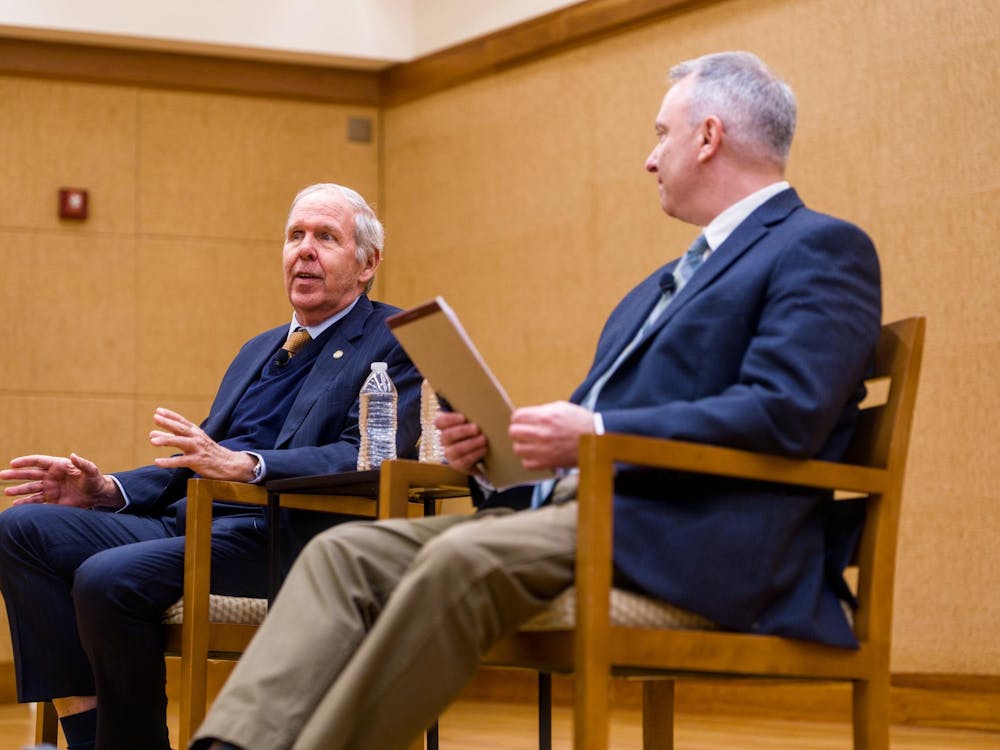As both the University and its cross-state cousin Virginia Tech negotiate appropriations agreements with the governor, Virginia Tech's Math Emporium, a technologically-based alternative to traditional classroom lectures, highlights the different approach to mathematical education the University has taken from its Blacksburg counterpart in using state funds.
As student-teacher interactions at the University were shown to be at a low compared to peer institutions in a recent survey by the Office of the Dean of Students, the Emporium also offers an alternative to current teaching practices at the University.
The Emporium encompasses six introductory math courses and supplements an additional six in the application of mathematic concepts, as well as gaining national recognition for its innovative technology, according to Virginia Tech Mathematics Prof. Michael Williams.
Created in the fall of 1997 in an old department store building, the Math Emporium is the result of a Tech study that sent one group of students through a regular classroom situation and another that went through the Emporium program. They found that students who went through the Emporium program performed significantly better in the more advanced full calculus sequence.
"In a nutshell, the lecture wasn't proving a very efficient way of learning," Williams said. "We wanted to make a different model where, instead of broadcasting one to many, we changed it all to one on one."
This different model consists of online learning materials that are essentially a custom textbook, according to Williams.
The Emporium course also includes a testing system that uses a program to produce practice and exam questions. The value of this component is that students can practice problems comparable to those that will be on tests, Williams said.
"We can expose the questions to the students ahead of time, and they can work them through practice quizzes or other vehicles like that to prepare for the exam," Williams said. "[This process is] all bottom-line oriented so students know what they need to do for tests."
While the six Emporium courses are taught through computer programs, there are teaching assistants and professors at the facility 15 hours a day to provide assistance. However, if a student understands the concepts and practice problems, he or she could theoretically pass the course without ever consulting a teacher.
Here at the University, however, some math professors are wary of the effectiveness of the Math Emporium program as an isolated teaching instrument, Math Department Chair Ira Herbst said. Herbst said he thinks as long as the University continues to have the possibility of teaching math in relatively small classes, such a system is the best way to go.
"We find that in calculus, too much reliance on technology impedes understanding," Herbst said. "But of course, once one really understands what is going on, technology is great. But you must have a really good understanding of the basic principles before you rely on technology."
Second-year College student Ian Chapman said the experience he has received in small introductory math courses has been satisfactory so far, but the only potential problem is the difficulty of enrolling in foundation courses.
"I think that the intro classes are kind of hard to get into, since everyone has to take math and since they are small classes," Chapman said.
Because of the size of the Math Emporium, which contains close to 550 computer systems and is open 24 hours a day, seven days a week, problems with enrollment are rare. Williams said adding an additional 1,500 to 2,000 students to one course is not a problem, so no limits are put on registration.






